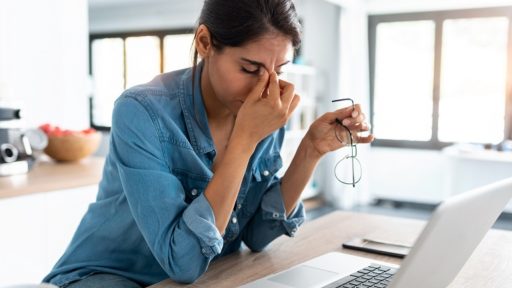Emerging from lockdown

Many businesses are looking to re-open after temporarily shutting down or reducing their operations due to Covid-19. However, re-opening can present specific hazards, which if not planned or managed properly, can result in damage, injury, legal action and further disruption to your business. We take a closer look at some of the key considerations businesses need to take as they look to return to work.
COVID-19 Risk Assessment
One of the key requirements for any business to undertake before it considers opening is to complete a thorough risk assessment in light of the risks from COVID-19. You have a legal responsibility to protect workers and others from risk to their health and safety.
The Government have produced a comprehensive guide to managing risks within the workplace and this has been split into a number of key sectors including:
- Construction and other outdoor work;
- Factories, plants and warehousing;
- Labs and research facilities;
- Offices and contact centres;
- Restaurants offering takeaway or delivery;
- Shops.
The guidance provides advice on who should go to work, social distancing at work, managing customers and visitors, cleaning, PPE, managing your workforce, inbound and outbound goods and more. The HSE have also produced a short guide to working safely during the Coronavirus outbreak.
Remember that a risk assessment should be a constantly evolving document. Communicate your plans, consult with, and listen to your employees concerns, amending the assessment and any business practises as required.
Social distancing at work
 Alan Boswell Group have prepared guidance on the need to ensure we all remain compliant with the social distancing rules while at work. This is available here. In essence it will be crucial for businesses to:
Alan Boswell Group have prepared guidance on the need to ensure we all remain compliant with the social distancing rules while at work. This is available here. In essence it will be crucial for businesses to:
- Follow the latest Government advice.
- Implement suitable measures to meet the requirements.
- Provide information to staff on how you are meeting the requirements.
- Ask staff to sign off against these measures.
- Listen to all staff concerns and act upon them where appropriate.
- Keep records.
Cleaning Protocols
 This will be one of the key considerations of any business hoping to return to work. The Governments guidance is detailed but the key factors include:
This will be one of the key considerations of any business hoping to return to work. The Governments guidance is detailed but the key factors include:
- A pre-assessment of any site, ensuring a deep clean, checking ventilation and providing hand sanitiser.
- Implementing a frequent cleaning regime, especially of high use areas and high-touch areas, such as door handles and keyboards.
- Limiting use of any shared equipment, such as printers or machinery.
- Cleaning of workspaces, equipment and the removal of waste and personal belongings at the end of shifts.
- Using signs and posters to remind employees of social distancing, good hygiene and handwashing
- Setting guidance on the use of toilets to ensure they are kept clean, social distancing is implemented as far as possible and hand towels are used in place of hand dryers.
- Setting guidance on the use of any shared facility including kitchens (and fridges), showers, changing rooms and lockers.
Workforce Management
To reduce the risk of cross contamination the Government are recommending that businesses reduce the contact between workers. This may include a number of considerations:
- Minimise non-essential travel – working remotely wherever possible.
- Creating shift patterns that reduce contact between workers or where necessary contact is kept to the same people or teams.
- Identifying areas where people have to pass things to each other and find ways to remove direct contact.
- Ensuring any location where staff are required to spend time (such as hotels) also meet social distancing rules.
Personal Protective Equipment (PPE)

Irrespective of Covid-19 implication businesses should continue to use PPE as you do normally.
Other than within clinical settings the Government have made it clear that the use of additional PPE beyond what you usually wear is not beneficial because COVID-19 is a different type of risk to the risks you normally face in a workplace, and needs to be managed through social distancing, hygiene and fixed teams or partnering, not through the use of PPE. Your risk assessment should reflect this.
They have, however, recognised that people may prefer to wear face coverings and recommend that companies allow their use if employees want to –highlighting that a face covering does not reduce the importance of primary hygiene practises.
Customers, visitors and contractors
For many this will be a major consideration. Implementing a robust process for dealing with visitors will be crucial.
Where it is not possible to support your clients remotely then guidance on social distancing and hygiene will be critical along with:
- Limiting the number of visitors to reduce person to person exposure
- Working with suppliers and customers to stagger delivery and collection times
- Maintaining a record of visitors if possible
- Revising arrangements to ensure social distancing and hygiene.
Existing H&S arrangements
 One important thing to remember is that your existing H&S arrangements need to be maintained. One risk does not preclude you from another. So, if you have refresher training due, such as use of equipment training, this will need to completed on time.
One important thing to remember is that your existing H&S arrangements need to be maintained. One risk does not preclude you from another. So, if you have refresher training due, such as use of equipment training, this will need to completed on time.
It may even be appropriate to consider whether workers are ‘out of practise’ if they have not been in work for a few months and would benefit from some training in advance of returning to duties. It’s not just employees; check equipment over thoroughly before turning it on if it has been idle for an extended period of time. Your statutory inspections must also be completed in line with any schedule.
Business continuity planning
You, ideally, will have a business continuity Plan (BCP) in place. This plan would be worth revisiting in light of the risk of a second wave from Coronavirus. We have prepared an article reviewing some of the considerations for your BCP plan. You can read it here.
Insurance cover
Remember to check with your insurance broker to ensure you have appropriate cover in place as your business navigates any changes.
This guidance note can be downloaded in .pdf format by clicking below.
Emerging from lockdown - a guide for business
Detailed Government advice and guidance can be found here and you can download risk assessment templates from the HSE here.




